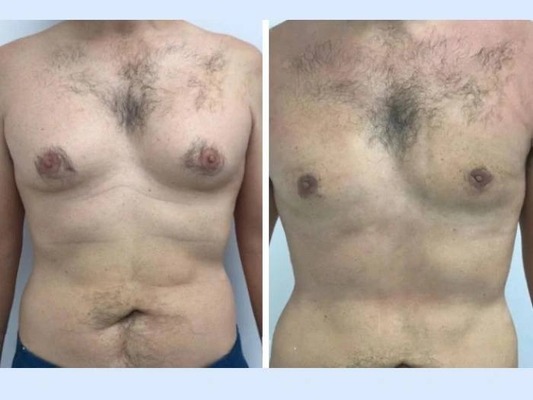Breast augmentation is a well-established cosmetic procedure designed to enhance the size, shape, and symmetry of the breasts using implants. Among the many aspects that influence the outcome of this surgery, the type and location of incisions play a critical role. For individuals considering Breast Augmentation in Islamabad, understanding the incision options is vital to achieving aesthetic goals while minimizing visible scarring and reducing complications.
The decision regarding incision type is made collaboratively between the patient and the plastic surgeon, based on individual anatomy, implant type, surgical technique, and cosmetic preference. Each incision method has specific advantages and potential limitations, which are carefully weighed to ensure optimal surgical results.
Why Incision Type Matters in Breast Augmentation
The incision serves as the entry point through which the implant is inserted into the breast pocket. The placement of the incision affects:
-
Visibility of the resulting scar
-
Ease of implant placement and positioning
-
Control over symmetry and outcome
-
Suitability for specific implant types (saline or silicone)
Selecting the appropriate incision site helps the surgeon achieve precise outcomes while accommodating the patient’s comfort, healing ability, and aesthetic expectations.
Common Types of Breast Augmentation Incisions
1. Inframammary Incision (Under the Breast Fold)
Description:
The inframammary incision is made along the natural crease where the lower breast meets the chest wall, called the inframammary fold. It is one of the most commonly used techniques in breast augmentation surgeries.
Advantages:
-
Offers excellent visibility and access for precise implant placement
-
Suitable for all implant types and sizes, including silicone gel implants
-
Hidden within the natural breast fold, making scars less noticeable
-
Lower risk of complications such as capsular contracture
Considerations:
-
Requires the presence of a well-defined breast fold for optimal scar concealment
-
Scar may be visible when lying down or in specific clothing styles
Ideal Candidates:
This approach is typically recommended for women who prioritize precision in implant positioning and those opting for larger silicone implants.
2. Periareolar Incision (Around the Areola)
Description:
The periareolar incision involves making a semicircular cut along the lower edge of the areola—the pigmented area surrounding the nipple. This technique provides discreet access to the breast interior.
Advantages:
-
The natural color transition of the areola camouflages the scar
-
Direct access to the breast tissue, allowing for accurate implant placement
-
May be combined with a breast lift when necessary
Considerations:
-
Slightly higher risk of changes in nipple sensation
-
Not ideal for patients with very small areolas
-
May increase the risk of bacterial contamination and capsular contracture
Ideal Candidates:
Women with moderate-sized areolas who are seeking both augmentation and mild reshaping of the breast contour.
3. Transaxillary Incision (Through the Armpit)
Description:
The transaxillary approach uses an incision made within the natural folds of the armpit. A surgical tunnel is created from the armpit to the breast, and the implant is inserted using endoscopic guidance.
Advantages:
-
No visible scarring on the breast
-
Suitable for patients concerned with maintaining unmarked breast skin
-
Avoids interference with nipple sensation
Considerations:
-
Technically more challenging and requires surgeon’s expertise
-
Limited control over implant placement compared to inframammary or periareolar approaches
-
Not typically used for silicone implants without advanced equipment
Ideal Candidates:
Patients who prefer scarless breasts and are willing to accept underarm scars. Best for those choosing saline implants, which can be inserted empty and filled afterward.
4. Transumbilical Incision (TUBA – Through the Belly Button)
Description:
This less common method involves making an incision at the rim of the navel. The surgeon creates a path to the breast and inserts the implant via an endoscopic tube.
Advantages:
-
Completely scarless breast appearance
-
Single incision may suffice for both breasts
-
Rapid healing of the umbilical incision
Considerations:
-
Limited to saline implants, as silicone implants cannot be compressed for insertion
-
Highly technical and less widely performed due to limited access and precision
-
Fewer surgeons are trained in this method
Ideal Candidates:
Women specifically seeking no breast scarring and who are suitable candidates for saline implants.
Implant Type and Its Role in Incision Selection
The choice between saline and silicone implants often influences the appropriate incision site:
-
Saline Implants: More flexible with incision choices, including transumbilical and transaxillary, because they are inserted empty and filled once in place.
-
Silicone Implants: Usually require larger incisions for insertion due to their pre-filled nature, making inframammary or periareolar approaches more suitable.
During consultation, the surgeon will recommend the best incision method based on implant type, body anatomy, and desired outcome.
Surgeon’s Technique and Expertise
The surgeon’s skill level significantly impacts incision choice and its outcomes. Some surgeons are more experienced with specific approaches, such as transaxillary or TUBA, which require specialized equipment and training. Choosing a board-certified plastic surgeon with proven experience in breast augmentation ensures optimal scar placement, symmetrical implant positioning, and reduced complication risks.
Pre-surgical consultations allow the patient to view before-and-after images, assess incision site examples, and discuss concerns about visibility, healing, and potential risks.
Scar Healing and Post-Surgical Care
Regardless of the incision type, modern surgical techniques and meticulous suturing aim to minimize scarring. Post-operative care plays a crucial role in scar healing and includes:
-
Keeping the incision site clean and dry
-
Applying prescribed topical treatments or silicone sheets
-
Avoiding sun exposure during healing to prevent pigmentation
-
Attending regular follow-ups for scar evaluation
Most incision scars fade significantly within 6 to 12 months. Their final appearance depends on the patient’s skin type, healing ability, and adherence to aftercare instructions.
Balancing Aesthetics and Safety
The decision on incision type is a balance between aesthetics and surgical practicality. While a hidden scar may be desirable, it should not come at the expense of accurate implant placement or higher complication risks. The priority should be achieving safe, symmetrical, and long-lasting results with the least interference to breast function and sensation.
Open communication with the surgeon ensures alignment between patient expectations and clinical feasibility.
Conclusion
Selecting the right incision type for breast augmentation is a vital component of the surgical planning process. Whether it’s the widely preferred inframammary incision or the less visible transaxillary route, each technique carries distinct advantages based on individual goals, body anatomy, and implant selection. By discussing options thoroughly with a qualified surgeon, patients can make informed choices that support both their aesthetic vision and surgical safety. For those considering breast surgery in Pakistan, the SKN Cosmetics clinic in Islamabad provides expert consultation and a wide range of advanced breast augmentation options, including personalized incision planning tailored to deliver exceptional results.



